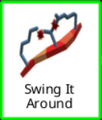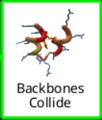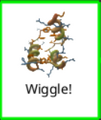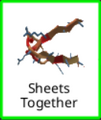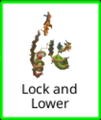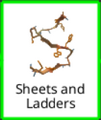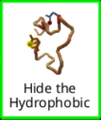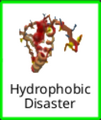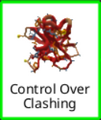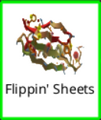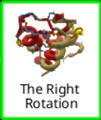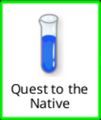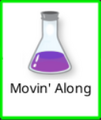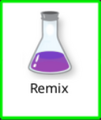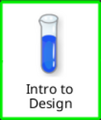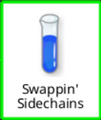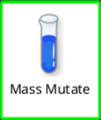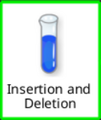Cara Nelson (talk | contribs) m (Added a missing article and preposition, and corrected a misused pronoun.) Tag: Visual edit |
LociOiling (talk | contribs) (Link to s0cktrates' video.) |
||
| Line 3: | Line 3: | ||
Try to complete each puzzle without help first. Most of the puzzles should take only a couple of minutes. If you get stuck, use "Reset Puzzle" from the Actions menu in the lower left and try again. |
Try to complete each puzzle without help first. Most of the puzzles should take only a couple of minutes. If you get stuck, use "Reset Puzzle" from the Actions menu in the lower left and try again. |
||
| + | |||
| + | '''New:''' the video [https://www.youtube.com/watch?v=bIc-FoHLtjY QUICK Foldit Tutorial Walkthrough] from S0ckrates gives a quick introduction to the intro puzzles. |
||
[[Intro Puzzles/Tips|Intro Puzzle Tips]] covers some common questions like how to [[Band|band]] and [[Freeze|freeze]]. It also gives some keyboard shortcuts for view options that may help you see what's going on. |
[[Intro Puzzles/Tips|Intro Puzzle Tips]] covers some common questions like how to [[Band|band]] and [[Freeze|freeze]]. It also gives some keyboard shortcuts for view options that may help you see what's going on. |
||
Revision as of 02:22, 22 March 2020
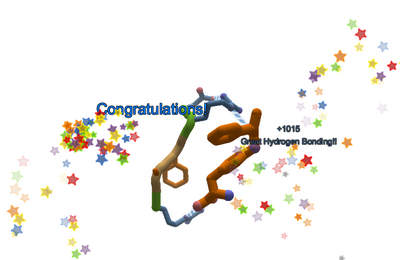
Success!
Intro Puzzles show you how to play Foldit. This special campaign level shows you how to use many of the tools, and explains some of the key ideas, like Clashes, Voids, and Exposeds.
Try to complete each puzzle without help first. Most of the puzzles should take only a couple of minutes. If you get stuck, use "Reset Puzzle" from the Actions menu in the lower left and try again.
New: the video QUICK Foldit Tutorial Walkthrough from S0ckrates gives a quick introduction to the intro puzzles.
Intro Puzzle Tips covers some common questions like how to band and freeze. It also gives some keyboard shortcuts for view options that may help you see what's going on.
If you're having problems, you'll find tips below. Just click on the icon for the puzzle you're stuck on. There are tips and techniques for each puzzle. Each puzzle also YouTube videos provided by Foldit players Madde and Loci.
A few puzzles, such as Remix, Electron Density, and Hydrophobic Disaster, may require more time. These intro puzzles are closer to real Foldit puzzles.
If you have additional questions, ask online in the Foldit client using "Chat - Global", or "Chat - Group". See Foldit chat for more on Foldit chat. The following translations of this page are available: Deutsch | Svenska | Español | German | Russian | Japanese.
Intro puzzles are organized into levels. Click on the icons below for more information about each intro puzzle. The Intro Puzzle Master List has the same information in a simplified format.
Sidechains
The puzzles in the Sidechains level introduce sidechains and demonstrate ways to fix clashes. The shake tool makes its debut.
Backbone Packing
The Backbone Packing level introduces the backbone, the part which holds the protein together. The sidechains are attached to the backbone.
This level demonstrates how to fix voids. The wiggle tool is added to the mix. Wiggle and shake are the most important tools in Foldit.
Hydrogen Bonding
The Hydrogen Bonding level introduces hydrogen bonds, which help hold proteins together. Hydrogen bonds show as blue-and-white "candy canes" in Foldit.
This level includes techniques for lining up sheets that are used all the time by Foldit players. It adds bands, which are important for moving sheets and other parts of the protein.
Hydrophobics and Hydrophilics
This level discusses hydrophobics and hydrophilics in more detail. Orange sidechains are hydrophobic, and should be hidden on the inside of the protein. Blue sidechains are hydrophilic, and are OK on the outside of the protein.
Tools and Types
The Tools and Types level introduces some of the different puzzle types found in Foldit. The move tool is added.
This level also introduces the remix tool, which searches for new shapes for your protein.
Sequences
Sequences introduces the alignment tool. The alignment tool lets you apply the shapes of other proteins to the protein you're working on.
You'll also get to use cuts, which chop a protein into pieces. Cuts are used in all kinds of ways in Foldit.
Conditions
This level covers conditions, which enforce special rules on some puzzles. Conditions may change your score, adding or subtracting points. Conditions were previously called "filters".
Blueprint
This level introduces the blueprint tool, which is used in design puzzles to insert shapes found in natural proteins. The blueprint tool may help players create proteins which fold up on their own like natural ones. Design puzzles are covered in more detail in the next section.
Protein Design
This level introduces Foldit design puzzles, which give players the chance to design new proteins. Some of these designs actually get turned into real proteins in the Foldit lab, see design puzzle results for more.
More Molecules
The More Molecules level introduces ligands. A ligand is a non-protein atom or molecule. A ligand can be as small as copper or calcium atom, or as large as a strand of DNA.
These puzzles work with fixed ligands that can't be changed. A new small molecule design feature is in development for Foldit. This will allow the ligand to be designed, much as current designs puzzles allow proteins to be designed.
